A Comprehensive Guide To The Different Types of Pitbulls

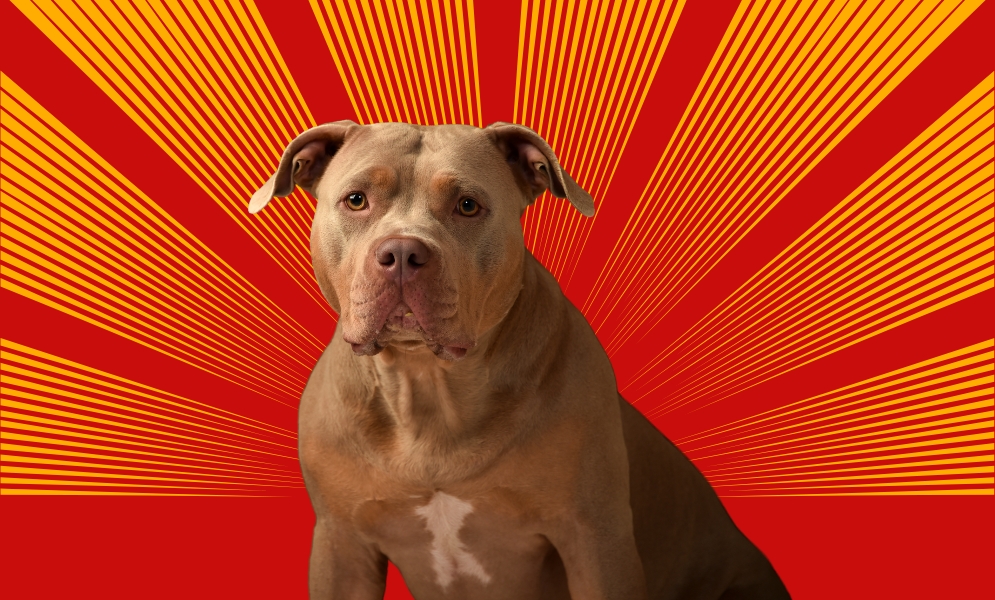
Pitbulls are often misunderstood and misrepresented, but these loyal and affectionate dogs have a rich history and diverse lineage that deserves to be celebrated. In this comprehensive guide, we will explore the various types of Pitbulls, delving into their unique characteristics, origins, and what makes each type special.
Whether you’re a prospective owner, a Pitbull enthusiast, or simply curious about these remarkable dogs, this guide will provide valuable insights and a deeper appreciation for the different breeds under the Pitbull umbrella. Join us as we uncover the fascinating world of Pitbulls and dispel some of the myths surrounding these incredible canines.
Common Misconceptions about Pit Bulls
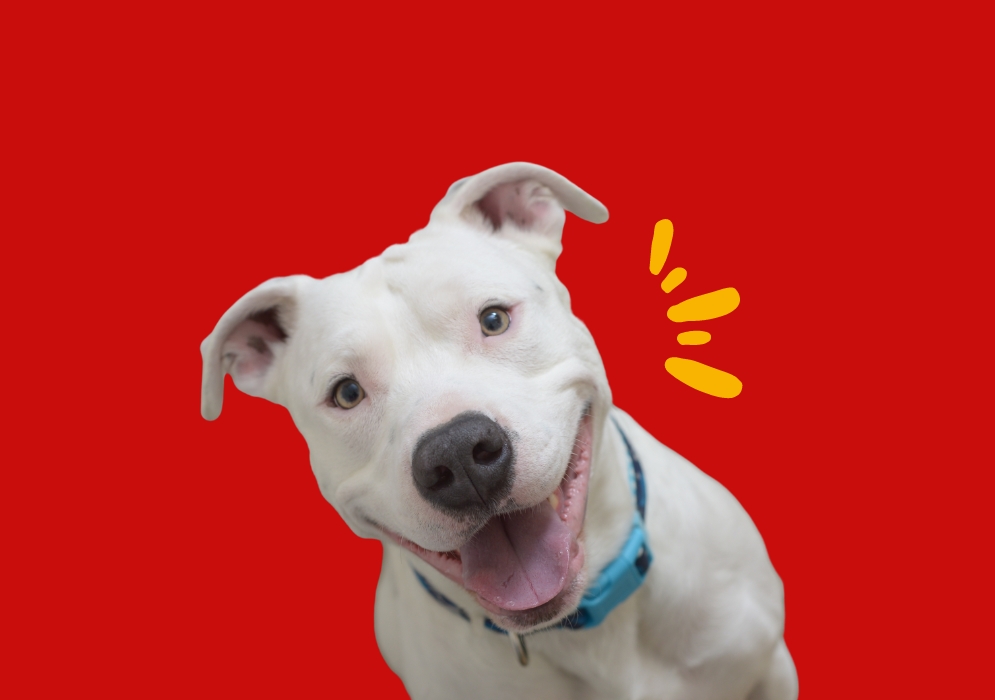
Unfortunately, pit bulls have been the subject of numerous misconceptions and negative stereotypes, often fueled by sensationalized media reports and misinformation. Let’s address some of the most common myths:
Myth 1: Pitbulls have “Locking Jaws” Fact
Pitbulls do not have any biological or anatomical feature that allows their jaws to “lock.” This myth stems from their powerful bite force and determination, but their jaw structure is no different from other breeds.
Myth 2: Pitbulls are Inherently Aggressive Fact
Aggression is not an inherent trait in Pitbulls. Like any breed, their behavior is heavily influenced by socialization, training, and environment. Well-socialized and properly raised Pitbulls can be just as gentle and affectionate as any other breed.
Myth 3: Pitbulls Have a Higher Bite Rate Fact
Numerous studies have shown that Pitbulls do not have a higher bite force than other breeds. However, due to their strength and size, their bites can potentially cause more severe injuries, leading to increased media attention and public perception.
By separating fact from fiction, we can better understand and appreciate these amazing dogs for who they truly are.
Getting To Know the Different Types of Pitbulls
When discussing Pitbulls, it’s essential to recognize that this term encompasses several distinct breeds, each with its own unique qualities. Let’s dive into the most prominent types:
American Pitbull Terrier
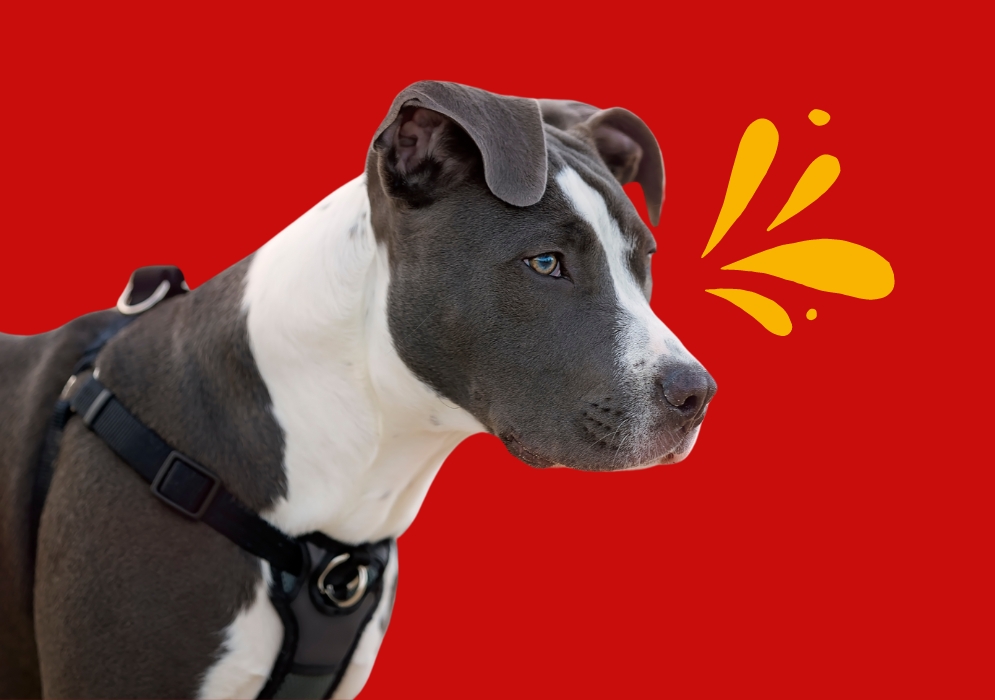
| Key Points | Description |
| Breed Name | American Pitbull Terrier |
| Origin | United States |
| Height | 17-21 inches (43-53 cm) |
| Weight | 30-60 pounds (13-27 kg) |
| Coat Type, Color and Pattern | Short, smooth coat; colors include black, white, brindle, fawn, blue, red, brown, tan, and gray |
| Life Span | 8-15 years |
| Temperament | Loyal, affectionate, courageous |
| Exercise Needs | High: requires at least 1 hour of exercise daily |
| Training Difficulty | Medium: intelligent but can be stubborn |
| Grooming Needs | Low: weekly brushing, occasional baths |
The American Pitbull Terrier (APBT) is often considered the epitome of the Pitbull breed. These muscular, athletic dogs boast a broad chest, powerful jaws, and a confident stance.
Despite their imposing appearance, APBTs are known for their loyalty, affection, and eagerness to please their owners.
These dogs are also very friendly and love to be around people. However, the American Pitbull Terriers may not always get along with other dogs and might also view smaller animals as prey.
American Staffordshire Terrier
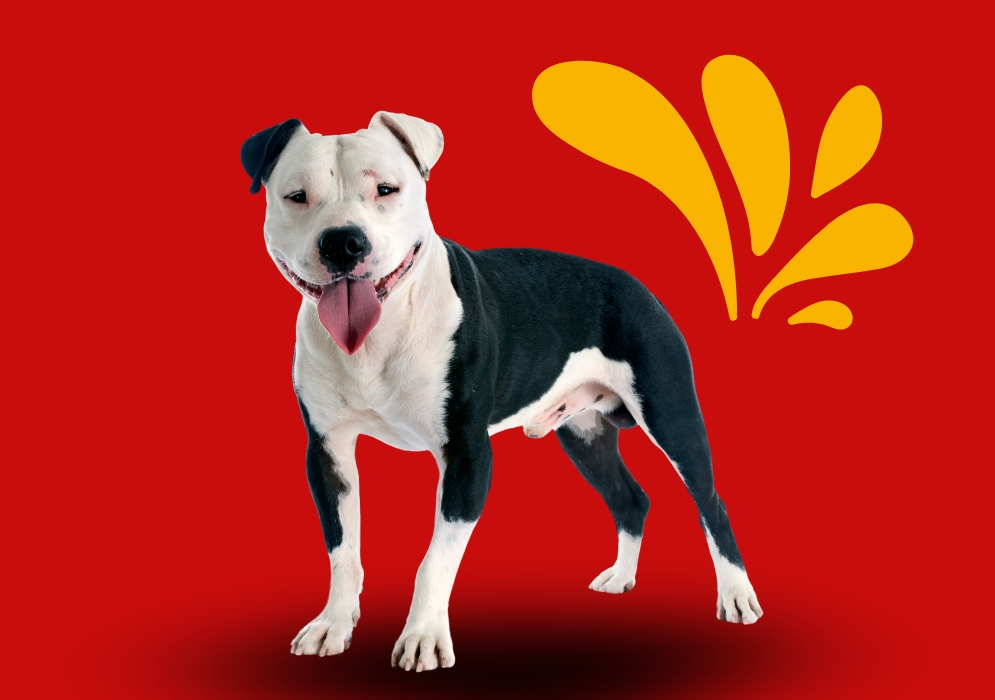
| Key Points | Description |
| Breed Name | American Staffordshire Terrier |
| Origin | United States |
| Height | 17-19 inches (43-48 cm) |
| Weight | 40-70 pounds (18-32 kg) |
| Coat Type, Color and Pattern | Short, stiff coat; colors include black, fawn, red, white, blue, and brindle patterns. Some dogs may have patches or spots. |
| Life Span | 12-16 years |
| Temperament | Courageous, affectionate, protective |
| Exercise Needs | High; requires 1-2 hours of exercise daily |
| Training Difficulty | Medium: intelligent but can be stubborn |
| Grooming Needs | Low: weekly brushing, occasional baths |
Closely related to the APBT, the American Staffordshire Terrier (AmStaff) shares many physical traits but is slightly stockier and more muscular. These dogs are renowned for their unwavering devotion to their families and gentle nature with children.
The breed originated in the United States in the 19th century and developed from crosses between bulldogs and terriers. Initially, they were used for various tasks, including farm work, guarding, and as family companions. They were also involved in dog sports and showbiz due to their trainability and intelligence.
Staffordshire Bull Terrier
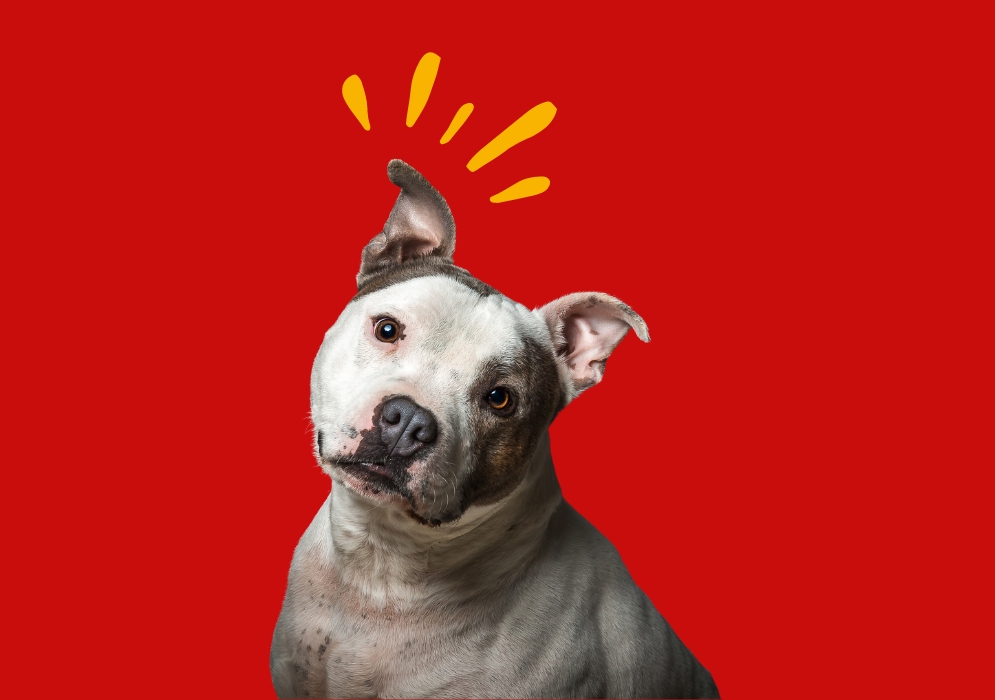
| Key Points | Description |
| Breed Name | Staffordshire Bull Terrier |
| Origin | United Kingdom |
| Height | 14-16 inches (36-41 cm) |
| Weight | Males: 29-37 pounds (13-17 kg); Females: 24-34 pounds (11-15.4 kg) |
| Coat Type, Color and Pattern | Short, smooth coat; colors include black, blue, fawn, red, white, and brindle, with or without white patches |
| Life Span | Over 12 years |
| Temperament | Loyal, affectionate, courageous, playful, intelligent |
| Exercise Needs | High; requires regular exercise to stay mentally and physically fit |
| Training Difficulty | Medium requires consistent training and early socialization |
| Grooming Needs | Low: occasional baths, weekly brushing, regular nail trimming, and ear cleaning |
The Staffordshire Bull Terrier, often called the “Staffy,” or the “Stafford,” is a medium-sized, muscular dog within the Pitbull family. But despite their size, these dogs are very energetic and playful in nature. Consequently, they make excellent companions for active families and individuals.
Originating in 19th-century England, this breed was initially developed for dog fighting by crossing Bulldogs with various terriers. Because of their bullfighting history, ‘Staffies’ are often discriminated against and considered an aggressive breed. But this is not true at all. The modern Staffordshire Bull Terrier is known for being gentle, loyal, and particularly good with children.
American Bully
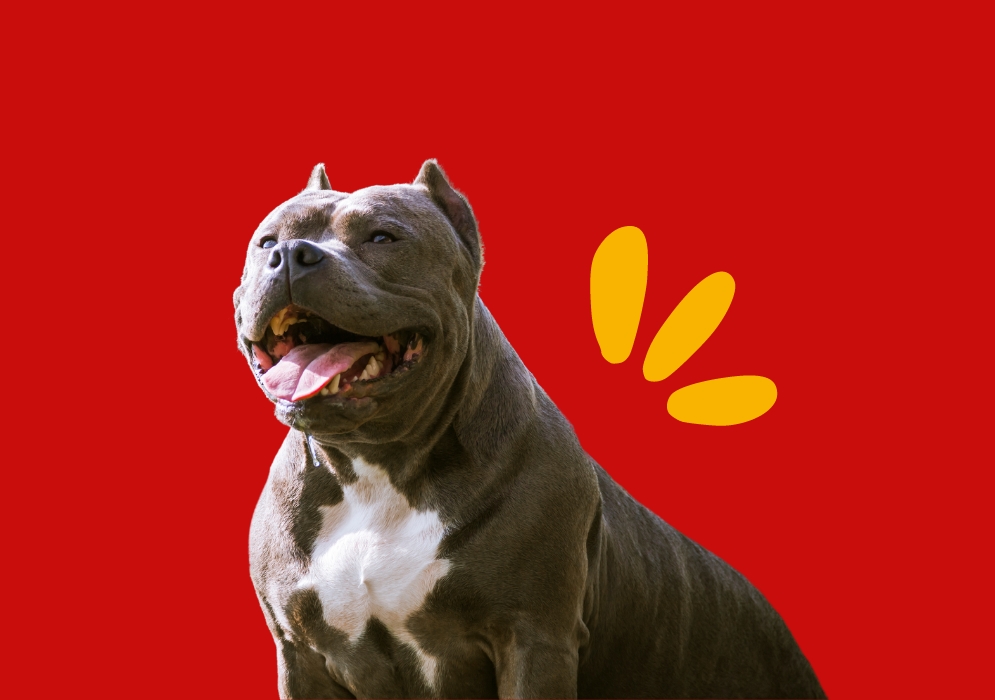
| Key Points | Description |
| Breed Name | American Bully |
| Origin | United States |
| Height | 13-23 inches (33-58 cm), depending on the variety |
| Weight | 44-132 pounds (20-60 kg), depending on the variety |
| Coat Type, Color and Pattern | Short, smooth, and glossy; all colors and patterns except merle |
| Life Span | 8-13 years |
| Temperament | Loving, loyal, energetic, highly adaptable, and trainable |
| Exercise Needs | Moderate; enjoys play and activity |
| Training Difficulty | Generally easy, intelligent, and eager to please. |
| Grooming Needs | Low; regular brushing and occasional bathing |
The American Bully is a relatively new breed, created by selectively breeding APBTs with other breeds like the Bulldog. American Staffordshire Terrier and the Olde English Bulldog. The breed was developed sometime between the 1980s and 1990s in the United States.
Despite their tough looks, these stocky, muscular dogs are actually gentle giants with a calm and affectionate temperament. They are also loyal and friendly and can be a great fit for families with children. The American Bully also comes in four sizes: Pocket, Standard, Classic, and XL.
Pitbull Health and Care: Common Health Issues
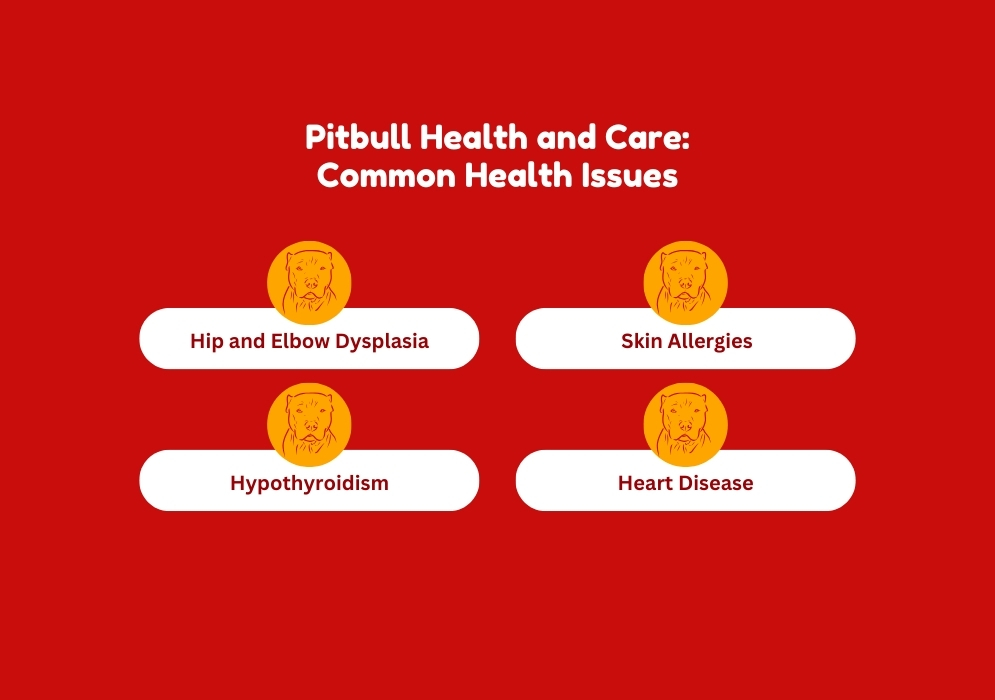
Like any breed, Pitbulls can be prone to certain health issues. Understanding these potential concerns and providing proper care is essential for their well-being. Here are some common health issues and tips for proper care:
- Hip and Elbow Dysplasia: These joint disorders can cause pain, lameness, and arthritis in pit bulls. Regular exercise, maintaining a healthy weight, and proper nutrition can help mitigate the risks.
- Skin Allergies: Pitbulls can be prone to skin allergies, which can manifest as itching, rashes, or hot spots. Identifying and avoiding potential allergens, as well as proper grooming, can help manage these issues.
- Hypothyroidism: This condition occurs when the thyroid gland doesn’t produce enough hormones, leading to weight gain, lethargy, and other symptoms. Regular veterinary check-ups and appropriate medication can help manage hypothyroidism.
- Heart Disease: Certain types of Pitbulls, such as the American Bully, may be predisposed to heart conditions like aortic stenosis or dilated cardiomyopathy. Regular check-ups and monitoring can help detect and manage these issues early on.
Pitbulls as Family Pets: Their Relationship with Children and Other Animals
One of the most common concerns regarding Pitbulls is their suitability as family pets, particularly around children and other animals. While it’s essential to exercise caution and supervision with any breed, Pitbulls can make excellent family companions when properly socialized and trained.
Pitbulls and Children
Contrary to popular belief, Pitbulls can be incredibly gentle and affectionate with children. Their loyalty and eagerness to please make them excellent companions for families with kids. However, teaching children how to interact with dogs respectfully and to never leave them unsupervised is crucial.
Pitbulls and Other Pets
With proper introductions and socialization, Pitbulls can coexist peacefully with other pets in the household, including cats, smaller dogs, and even larger animals like horses. However, it’s essential to supervise interactions and ensure that all pets feel comfortable and safe.
Common Health Issues in Pitbulls
Like any breed, Pitbulls can be prone to certain health issues. Understanding these potential concerns and providing proper care is essential for their well-being.
Here are some common health issues and tips for proper care:
Hip and Elbow Dysplasia
These joint disorders can cause pain, lameness, and arthritis in pit bulls. Regular exercise, healthy weight, and proper nutrition can help mitigate the risks.
Skin Allergies
Pitbulls can be prone to skin allergies, manifesting as itching, rashes, or hot spots. Identifying and avoiding potential allergens, as well as proper grooming, can help manage these issues.
Hypothyroidism
This condition occurs when the thyroid gland doesn’t produce enough hormones, leading to weight gain, lethargy, and other symptoms. Regular veterinary check-ups and appropriate medication can help manage hypothyroidism.
Heart Disease
Certain types of Pitbulls, such as the American Bully, may be predisposed to heart conditions like aortic stenosis or dilated cardiomyopathy. Regular check-ups and monitoring can help detect and manage these issues early on.
From the athletic and eager-to-please American Pitbull Terrier to the stocky and gentle American Bully, these pitbull-type dogs have captured the hearts of countless owners worldwide.
Moreover, inspite of the negative stereotypes and misconceptions that continue to plague them, these dogs have proven time and again that they can be loyal, affectionate, and devoted companions when raised with love, patience, and proper training.






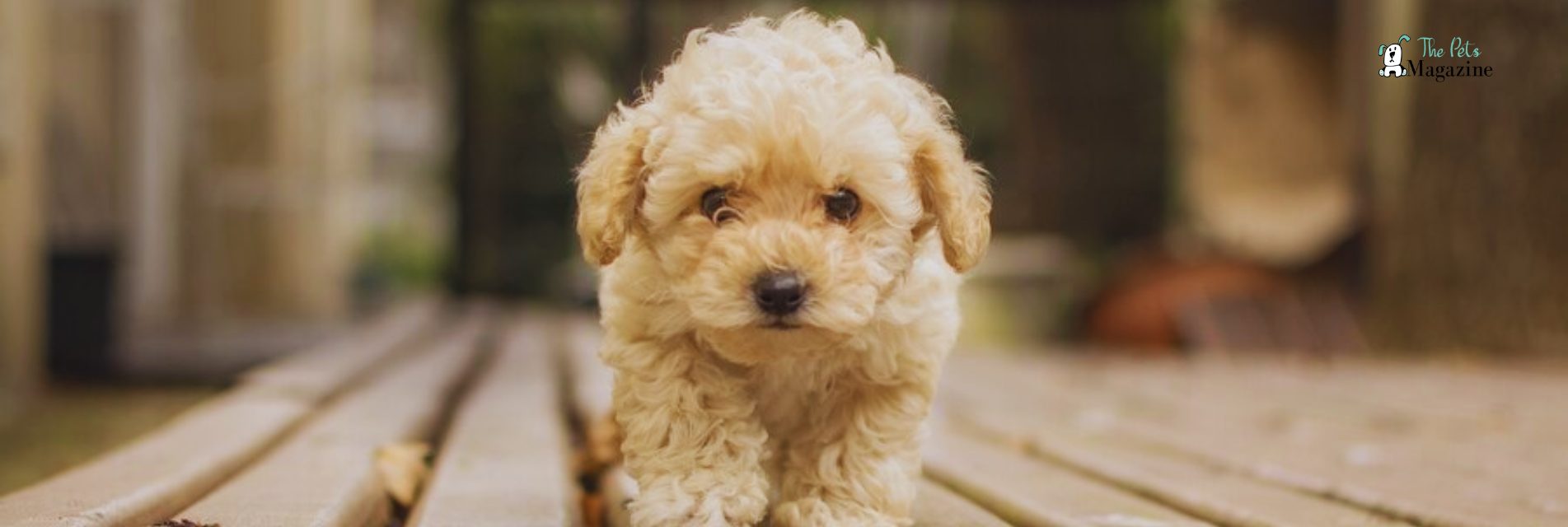
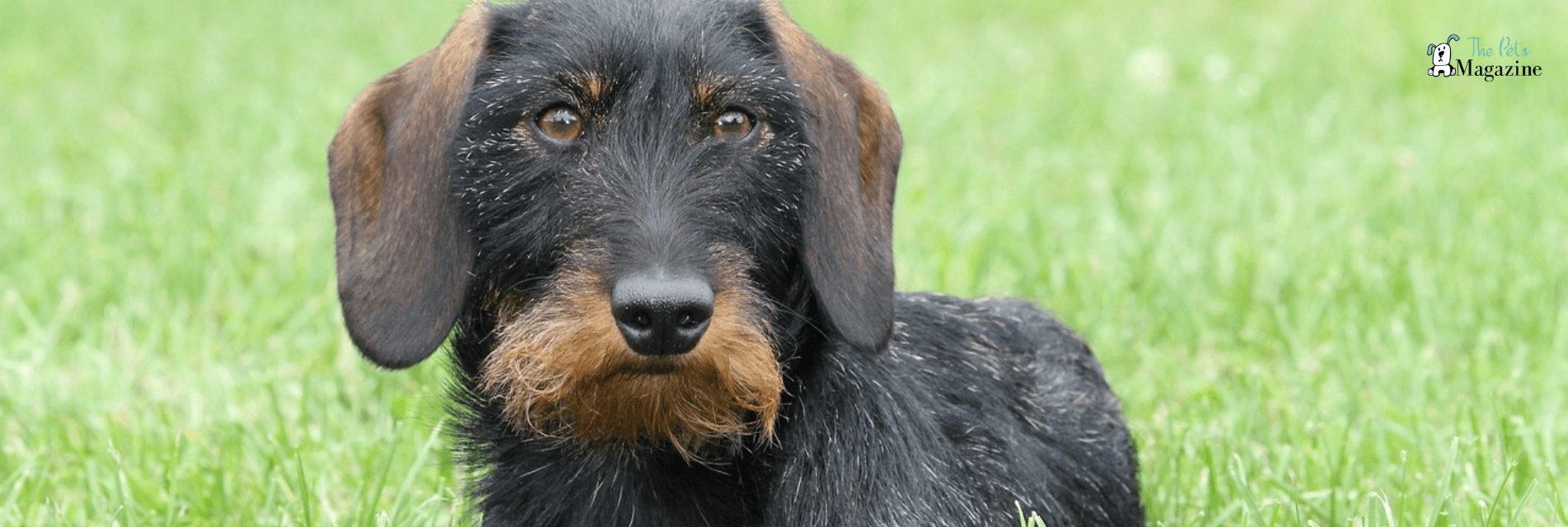
Leave A Comment